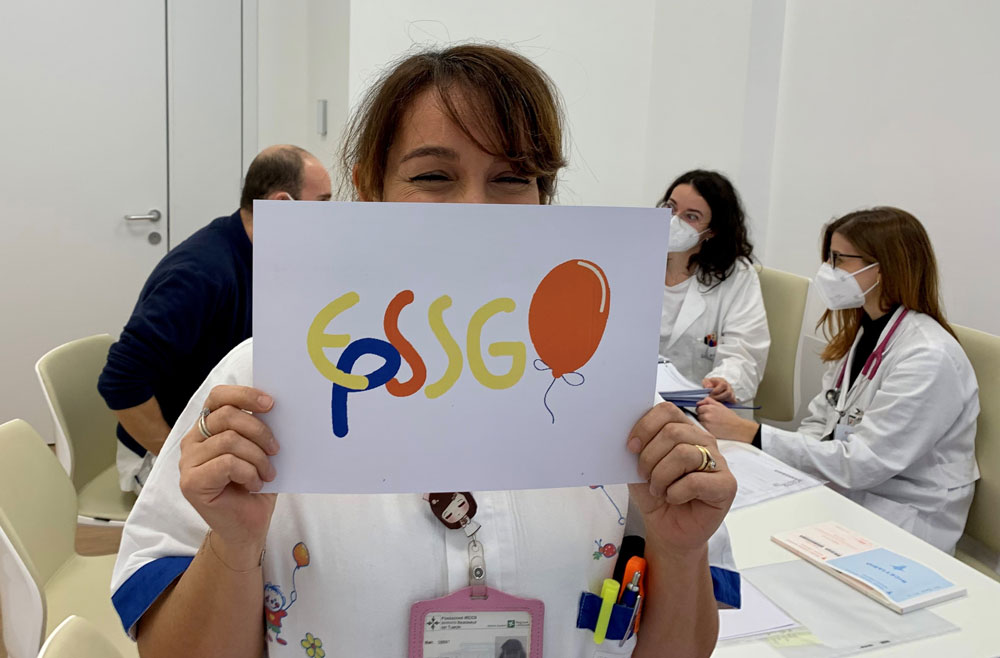
GENERAL INFORMATION
Soft tissue sarcoma (STS) is the name given to a varied group of malignant tumours (cancer) which originate in those cells in the body that are normally destined to form tissues such as muscle, fibrous structures and fat, etc. These are known as mesenchymal cells. Types of STS are often described according to their similarity to specific tissues. For example, rhabdomyosarcoma, which is the most common subtype of STS in children and young people, has features resembling the early stages of developing muscle tissue.
Overall, STS account for approximately 8% of all paediatric cancers. They are divided into two main groups - rhabdomyosarcoma (RMS – approximately 60% of STS in children) and non-rhabdomyosarcoma soft tissue sarcomas (NRSTS – this includes a large number of different tumour types which together account for about 40% of STS in children). Rhabdomyosarcoma is rare outside childhood and the teenage years but the many of the different types of NRSTS are more common in adults.
Cure rates vary considerable for types of STS and outcomes are strongly influenced not only by the particular subtype of STS but also by factors such as the site of the tumour, its size, local extent and the presence of distant spread of the disease (metastases). Treatments therefore vary in their intensity. Most, but not all, forms of STS require treatment with chemotherapy in addition to local treatment (surgery and / or radiotherapy).
If you are a patient, or the parent of a patient, with STS, please ask your doctor for further information about the treatment appropriate to you / your child available in your hospital.
RMS:
Rhabdomyosarcoma is the most common of the soft tissue sarcomas in pediatric age with an annual incidence of 5-6 per million children that means approximately 400 cases each year in Europe. Most of them are younger than 10 years old. It is more common in boys than girls. The aetiology is not known. Genetic factors may play an important role, as demonstrated by an association between RMS and predisposing cancer syndromes (Li-Fraumeni and others) and congenital anomalies (involving the genitourinary and central nervous system).
RMS cells present features of primitive muscle development and histologically it is distinguished into two main subtypes: embryonal RMS (approximately 70% of all RMS), and alveolar RMS (20%). RMS can grow in any part of the body but the most common areas of the body to be affected are head and neck, bladder or testes.
RMS is an aggressive tumors but thanks to a systematic multidisciplinary approach, including multidrug chemotherapy coordinated with surgery and radiotherapy, survival has progressively increased, especially for patients with localized disease. Prognosis remains unsatisfactory when metastasis are present at diagnosis or after relapse.
NRSTS:
The term non-rhabdomyosarcoma soft tissue sarcoma (NRSTS) collectively includes a heterogeneous group of neoplasms of presumed mesenchymal origin, different from rhabdomyosarcoma, that occur in childhood and adolescence and may vary in clinical course from relatively benign to highly malignant.
Under the NRSTS umbrella, there are over 50 distinct histologic subtypes, some tumor types unique to infants and small children (e.g. infantile fibrosarcoma and rhabdoid tumors), others more typical of the adolescent-young adult age range (e.g. synovial
sarcoma), but many are considerably more common in adults than in children (e.g. liposarcoma, leiomyosarcoma and undifferentiated pleomorphic sarcoma).
The rarity, the heterogeneity, and the aggressiveness of NRSTS make the management of children and adolescents with these tumors complex and challenging. It is strongly suggested that patients be referred to selected experienced institutions with multidisciplinary skills in enrolling patients in clinical trials.
General information can also be found at the links:
www.curesearch.org/Soft-Tissue-Sarcoma-in-Children/
www.curesearch.org/Rhabdomyosarcoma-in-Children-Just-Diagnosed-Information/
www.macmillan.org.uk/Cancerinformation/Cancertypes/Childrenscancers/Typesofchildrenscancers/Rhabdomyosarcoma.aspx
www.cancer.gov/cancertopics/pdq/treatment/childrhabdomyosarcoma/HealthProfessional/
www.cancer.gov/cancertopics/pdq/treatment/child-soft-tissue-sarcoma/Patient/
